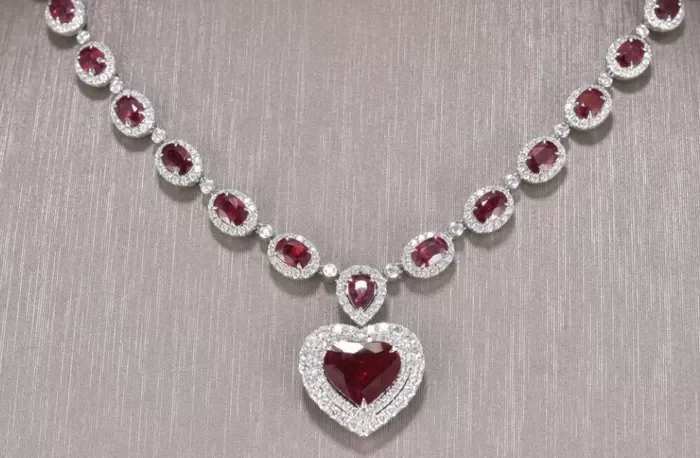Lab-grown diamonds have ignited a spirited debate within the jewelry world, often met with skepticism by those who champion traditionally mined diamonds. However, the fact remains that man-made diamonds are virtually indistinguishable from their natural counterparts, to the extent that even a seasoned diamond expert would struggle to tell them apart.
Amidst this discourse, the environmental footprint of lab-grown diamonds offers a compelling argument in their favor. Compared to mined diamonds, lab-grown diamonds often have significantly lower carbon emissions. Mads Twomey-Madsen, Pandora’s Vice President of Corporate Communications and Sustainability, asserts that “our [lab-grown] diamond has five per cent of the CO2 emissions” compared to the average mined diamond. This, he argues, makes the case for lab-grown diamonds an unequivocal one in terms of emissions reduction.
A 2019 report commissioned by the Diamond Producers Association did suggest that lab-grown diamonds could potentially have three times the carbon footprint of mined diamonds. However, this data considered emissions produced by labs in China and India, where coal remains the dominant energy source. Importantly, Pandora has partnered with a supplier that relies entirely on renewable energy for diamond production, fundamentally altering the carbon equation.
Having committed to the exclusive use of lab-grown diamonds in 2021, Pandora is now unveiling three new collections: Pandora Nova, characterized by distinctive four-prong settings; Pandora Era, which reinterprets classic bezel and prong settings; and Pandora Talisman, featuring five pendant designs inspired by the brand’s signature charm bracelets. These collections are currently available in the UK, US, Canada, and Australia, with plans to expand to select stores in Mexico and Brazil later this year.
To mark the expansion of its lab-grown diamond collections, Pandora has launched a “Diamonds For All” campaign, featuring figures like Pamela Anderson, Precious Lee, Grace Coddington, Sherry Shi, and Justina Miles. The campaign sends a powerful message: lab-grown diamonds are not only an eco-friendly alternative but also far more accessible, with prices starting at just £225 for Pandora’s lab-grown diamond range, roughly a third of the cost of mined diamonds.
Mary Carmen Gasco-Buisson, Pandora’s Chief Marketing Officer, emphasizes their commitment to making diamonds accessible to a wider audience. She explains, “We want everybody to be able to wear diamonds at any time of the day, every day if that’s what they wish. An increasing number of people are saying, ‘Wow, I can get an identical, just as beautiful, just as sparkly diamond [with the] same standards on the four Cs – color, clarity, carat, and cut – but now perhaps I can afford a bigger stone.'”
However, it is important to note that some individuals still hold a preference for the extreme rarity and mystique associated with natural diamonds. Surveys have indicated that the majority of consumers remain to be convinced about lab-grown diamonds, with a 2021 report revealing that 84 percent of consumers still favored natural diamonds. Furthermore, the social implications of diamond mining in regions like Botswana, Namibia, and South Africa must also be considered, as the industry plays a crucial role in local communities.
Nevertheless, lab-grown diamonds now constitute approximately 10 percent of all diamond sales, with the market projected to reach $55.5 billion (£44 billion) in 2031, more than double its current value. With Pandora, the world’s largest jewelry brand by volume, throwing its weight behind lab-grown diamonds, their path to mainstream acceptance is increasingly evident.
Lab-grown diamonds are just one facet of Pandora’s sustainability strategy, which also includes a pledge to use 100 percent recycled gold and silver by 2025 (all metals in Pandora’s lab-grown diamond collections are already recycled). Additionally, the company aims to reduce absolute greenhouse gas emissions by 50 percent by 2030, compared to a 2019 baseline, with its two manufacturing facilities in Thailand already operating on 100 percent renewable energy.
Pandora aspires to demonstrate that there is not only a demand for high-quality lab-grown diamonds but also hopes to inspire other major industry players to follow suit. Mary Carmen Gasco-Buisson concludes, “If we were to change all the [world’s] diamonds to lab-grown diamonds, it’s [the equivalent of] changing all the cars in New York City to electric vehicles.” This transition could result in an annual saving of six million tonnes of CO2, constituting a significant impact on carbon reduction. “I see us playing a meaningful role,” she adds.


